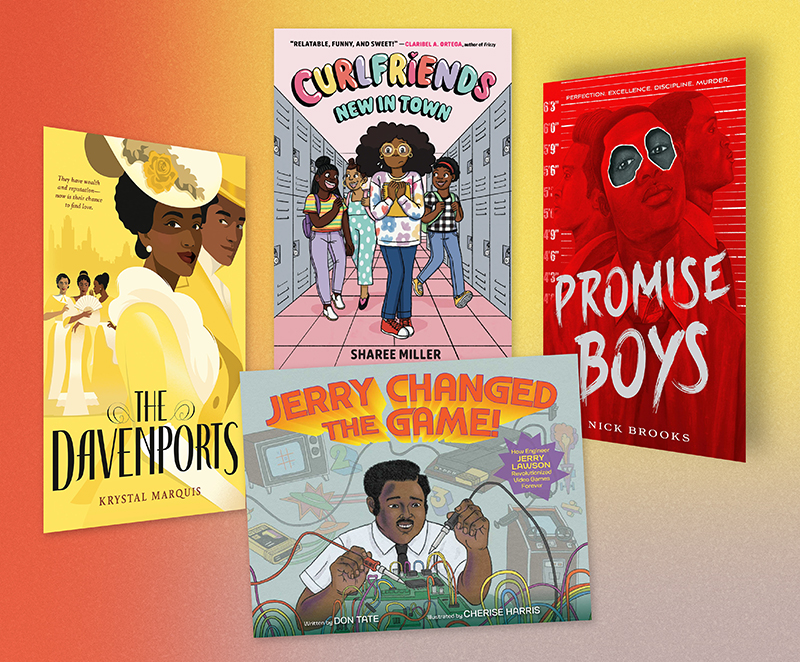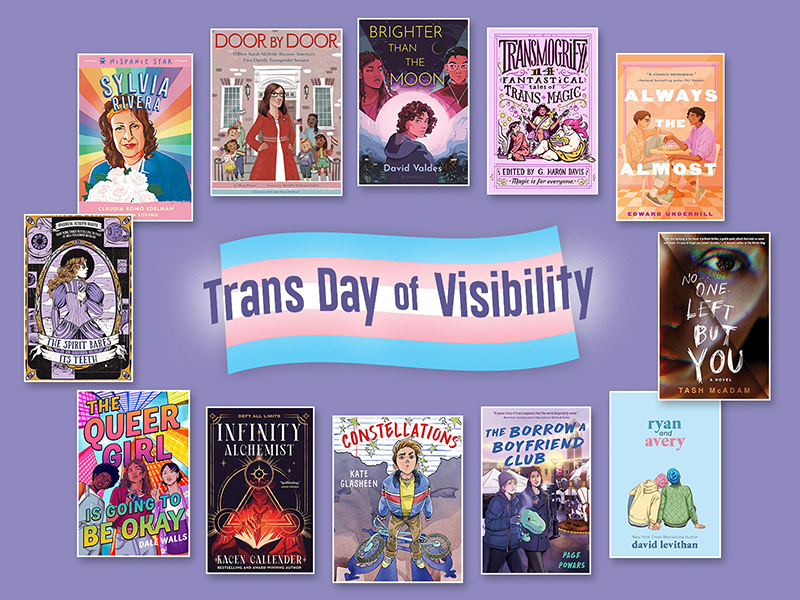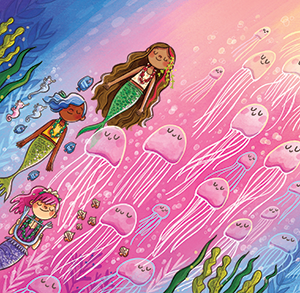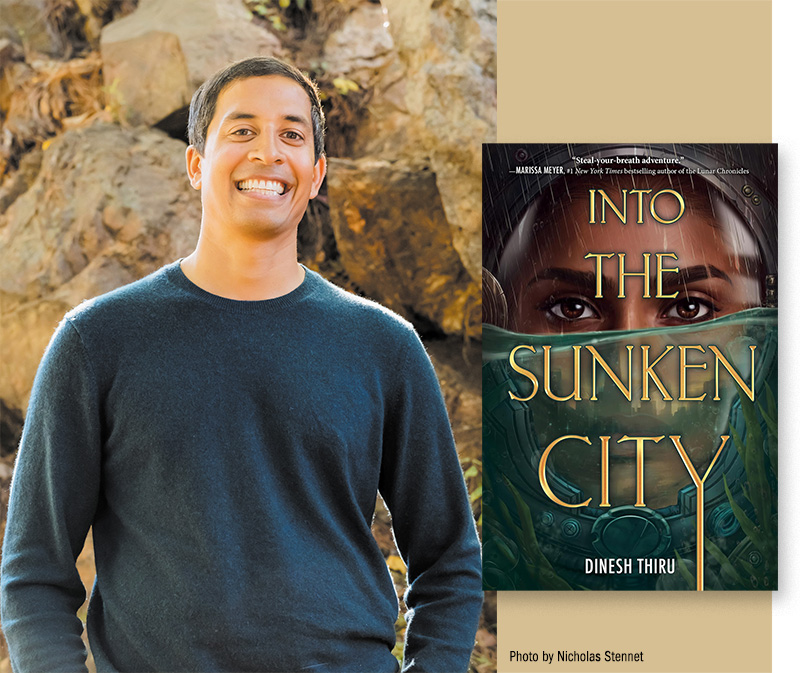2009 Newbery and Caldecott Predictions – Fall Edition
The Newbery has been in the children’s literary news lately what with Anita Silvey’s article in School Library Journal about the recent award winners and popularity. She’s all for popularity. Nina Lindsay’s thoughtful response is well worth reading as is Roger’s but don’t we get this complaint every year in one form or another? Someone says the kids won’t read the main winner for fun. People say it’s not a popularity contest and back and forth it goes. I love the great sweeping statements people come up with to describe the recent winners too. One person says that there aren’t enough small town librarians on the committee. Really? Which year would that be exactly? Because in my experience there’s been a healthy mix. Another commentator on Nina’s post says that the books always go to females because the committee members are mostly female. Which, of course, explains the presence of Elijah of Buxton and Wednesday Wars as last year’s honors. Clearly one of them would have been the Award winner if it had only been written by a woman.
Anywho, enough of that. Let’s look at what this year’s potentially unpopular Newbery winner will be. Nina said on Heavy Medal: A Mock Newbery Blog that publishers tend to save their medal contenders for the fall. Maybe so, but I for one have seen a pretty remarkably strong spring and summer going on. The first time I rounded up potential winners I looked at the cute springly titles. In the summer edition the fall books had already started to trickle in. Now we’re firmly in the fall and the stakes are rising. Bets are being placed. Some of my earlier suggestions have fallen by the wayside, while others are holding strong. These are entirely my own perceptions and no one can ever know what will win and what will lose. So before I make my final predictions, here are some thoughts on the worthy contenders.
ADVERTISEMENT
ADVERTISEMENT
 Newbery Predictions (Fall Edition!)
Newbery Predictions (Fall Edition!)
Chains by Laurie Halse Anderson – A surprise for the autumnal season! Falling squarely into the “middle grade” category in spite of its normally YA author and YA-looking cover, I am in love with this book. Heart and soul. If there’s a surprise critical hit this fall season, count on it to be Anderson’s baby. It takes historical fiction and gives it a kick. Formal review tomorrow.
The Underneath by Kathi Appelt – It took a little while but when the backlash started to lash back it lashed in full force. Nobody is denying that Appelt is one heckuva writer. The fact that she can leap with seeming effortlessness between different characters’ points of view is medal worthy right there. No no, the problem is that people are getting majorly turned off by the darkness of her title. Whole reams of objections have been made regarding the cover art which features fluffy kittens and a hound dog, implying an ootsy-cutesy tale inside. In the meantime, few children’s books examine the nature of evil as effectively as this. It’s still a major contender, but public opinion says that it’s going to face some competition. Nothing’s a done deal in the Newbery game.
The Penderwicks on Gardam Street by Jeanne Birdsall – So let’s see… we’ve a book where a slave fights for her freedom without cease, a book where cute animals are picked off by an evil man, a title where kids kill one another on live TV, a girl abandoned by her mentally instable mom… for those of you desperate for a little light-hearted fun, Penderwicks comes to the rescue. It’s easy to discount titles that aren’t filled with gore and racism, but to my mind it’s the other way around. Writing drama is one thing. Try your hand at writing something fun without dissolving into syrupy sweetness. Birdsall already garnered a National Book Award with her first Penderwicks book. And now that a large host of people are saying that the second one is even better… well, it wouldn’t be surprising to see the committee give Ms. Birdsall the appropriate amount of lovin’. That’s all I’m saying.
The Hunger Games by Suzanne Collins – Gore was never so good. While Penderwicks may called a “fun read” so too is its situational opposite The Hunger Games. I want the publisher to put a label on the cover that says, “Warning: Do not begin book if you have anything else to do for the next five hours.” The temptation is to write the book off as junky fun, but there’s a skill to the plotting, character development, and world in which it takes place. The only problem I can see with its award chances is the fact that the ending could be interpreted as unresolved. I choose not to see it that way, but will the award committee be quite as generous?
Waiting for Normal by Leslie Connor – Another case of the supposedly depressing book sucking people in and cheering them up. Certainly Connor’s title has proved to be a popular success, but there’s little word yet on whether it will end up being a critical one as well. I suspect that though the committee members like this book, in the end they’ll be unable to call it “distinguished” enough for a shiny medal. Hopefully they’ll prove me wrong.
Shooting the Moon by Frances O’Roark Dowell – It has been fascinating watching the conversation shift about on this one. I loved it. My co-worker Rebecca loved it. Then people started to put it down and I felt sad. Next thing you know it’s won an Honor in the Boston Globe/Horn Book Awards and is in the discussion again. Then over at Heavy Medals Nina said it wasn’t distinguished enough, so down it went once more. I think the ending is just fine and is doesn’t arrive with the accused thunk. But due to its shifting fortunes, I’m not so sure that this is the safe bet I wish that it was.
The Trouble Begins at 8: A Life of Mark Twain in the Wild, Wild West by Sid Fleischman – The buzz around this puppy grows and grows, which excites me. Of course, you have to be a relative fan of dialect and them’s no small potatoes. Fleischman already won for his oh-thank-God-it’s-under-100-pages reluctant reader Newbery favorite The Whipping Boy. Two wouldn’t hurt his reputation too terribly, would it? If you’ve been reading through my predictions to see how many of the books mentioned are written by or about men, this is the first that’s come up. I acknowledge the fact, and here’s another . . .
The Graveyard Book by Neil Gaiman – And yes, Gaiman is eligible. He lives in America and the book was released in tandem with Britain. Its chances rely entirely on how fantasy-friendly this year’s committee turns out to be. In this tale we’re seeing his best work for kids, no question. I’m a fan of the metaphors like the one I detected here, and on top of all of that it’s fun, fantastical, and gripping. Sure, it may be The Jungle Book done with ghosts, but I’ve never seen the intangible become quite this moving before.
Brooklyn Bridge by Karen Hesse – If there’s a book that’s been skirting around the edges of Newbery talks, this would be it. I know that potential Newbery winners don’t plan strategies, but sometimes a book seems to take matters into its own hands. If Brooklyn Bridge won it would be a victory for new publisher Feiwel and Friends. Hesse has already garnered herself a shiny medal or two, but don’t discount her. This book sits poised to suddenly take over the medal discussions by surprise.
We Are the Ship: The Story of the Negro League by Kadir Nelson – I believe that it was on Heavy Medal (yup, I just keep mentioning them) that a commentator described this book as a potential triple threat; It could win the Newbery, the Caldecott, and the Coretta Scott King Award entirely on its own. The mind boggles at the thought. I was pleasantly surprised by what an accomplished writer Mr. Nelson is, and like Fleischman’s book this falls into the informational-books-that-could-win-medals category. That said, it remains to be seen if the committee finds his words “distinguished” enough. I suspect they’ll pass on it and hope that the Caldecott feels otherwise, but all bets are off this year. Clearly it’s anybody’s game.
Caldecott Predictions (Fall Edition!)

In a Blue Room by Jim Averbeck, illustrated by Tricia Tusa – I tell you, this puppy has legs. I left it off of my summer recommendations by mistake and was told by a couple people that I’d made a huge mistake. So back on it goes. There’s no denying how perfect Tusa is when paired with Averbeck. It’s a match made in heaven. I have heard some objections to the book, however, and I wonder how much weight they’ll carry. The most common complaint is that the phrase “In a blue room” appears on the first page prior to the blue-i-fication. That’s why you’ll hear some people saying “But the room isn’t blue.” Still, there are little things in this book that I didn’t notice on a first or second read through. The mom tenderly holding her daughter’s hand, or putting her fingers through her hair. The fact that the characters’ backs are turned to the viewer right before the lights go out. Great tone, great pictures, great book.
Frogs by Nic Bishop – I’m cribbing off of a discussion at Brooklyn Public Library I attended concerning potential Caldecott winners. This book wasn’t even on my radar due to its non-ficitony status and, let us face it, photographic presence. But why shouldn’t a book of photographs win a Caldecott? There is [scans Caldecott criteria quickly] nothing that says that photography doesn’t count as “illustration”. Bishop has clearly put enormous thought, time, and effort into this photos and more importantly they support the text. The closest Caldecott have ever come to photography are the Knuffle Bunny books, and even those only garnered Honors. Still, like the world of Fine Art, photos have yet to be acknowledged as “real art” by the critics at large. But if Hugo Cabret can be considered a picture book, I think this is a far shorter leap of logic to make.
Old Bear by Kevin Henkes – There is a temptation among Mock Newbery and Mock Caldecott nominators to simply reach for books written by previous winners. Kevin Henkes wrote Kitten’s First Full Moon, ipso facto we should discuss Old Bear. Normally that kind of logic gets under my skin but not here. Old Bear really is a beaut. Simple, understated, charming. It has that elusive “classic feel” ascribed to many a Greenwillow publication. There isn’t much to say about it, which may work against it in debates, but as it stands it really is lovely.
That Book Woman by Heather Henson, illustrations by David Small – This one grew on me. Small won once already for his So You Want to Be President title, though that’s not why I include him here. Truth be told, I thought that So You Want was one of his weaker titles. The Gardener or The Money Tree were far better books to my eyes, but recently I haven’t seen him do much that I was too terribly interested in. That Book Woman plays the inevitable get-librarians-to-like-it-with-a-heroic-librarian card, but it also has the advantage of being based on the truth. What’s more, the story concentrates on two mountain kids, and not the faceless rider on the horse. Add in the simple human gestures of the characters, the breathtaking vistas, and the story itself (smart and not cloying, but heartfelt) and you’ve a real contender on your hands. Maybe. Note on the Cover: If any of you female librarians or booksellers are looking for a cool name for your blog, might I suggest “That Book Woman” as an excellent choice?
We Are the Ship: The Story of the Negro League by Kadir Nelson – I got a comment on my Goodreads Caldecott picks list that after Cabret it would be a shame to give the award not to a “picture book” in the classic sense again, but to a non-fiction title. I understand this argument, and I suppose it would make sense to create a Weirdo Text Plus Image Award for all the graphic novels/weirdo titles like this one. Until that happens, however, Caldecott is where We Are the Ship belongs, and the fact that Mr. Nelson has still not gotten a proper shiny golden medal is perplexing. However, a committee cannot take into account whether or not a person has been passed over for an award in the past. They have to determine the best book of that given year, and is We Are the Ship the best of the best? Maybe. Maybe not. Is it a picture book? Well, if Cabret was . . .
Wonder Bear by Tao Nyeu – Sheesh, I’ve been meaning to review this ever since the last Caldecott 2008 round-up. I don’t know what’s stopped me until now. Certainly the book has a more cartoony style than most of the titles mentioned. The perfect pen lines and bright colors distinguish it from the back. It’s the artist’s first picture book, which is not something committees generally take into account. Still, if Nyeu doesn’t make it with this book she’ll at least have a chance with another.
Wabi Sabi by Mark Reibstein, illustrated by Ed Young – I’ve written a review for this book since the last time I suggested it. Sadly, I’m not feeling the Wabi Sabi love from the general populace. Whassamatta, people? You don’t like mixed media or cats? If we were taking potential acceptance speech fodder into account then this would win the competition hands down. On top of all that, I love the art and I’m not a huge Ed Young fan most of the time. If it can convert me, it can convert others.
Frankenstein Takes the Cake by Adam Rex – Oh, I am leaving this here. Give it up for the funny, people. You can’t deny his ability with a variety of different styles. Then that old word “distinguished” raises its ugly mug, but damned if it doesn’t in fact distinguish itself from the pack. Heck, the film Blazing Saddles was distinguished in much the same way. Wait . . . let me find a definition of the word. Here we go, here we go… from The American Heritage Dictionary
- To perceive as being different or distinct.
- To perceive distinctly; discern: distinguished the masts of ships on the horizon.
- To make noticeable or different; set apart.
A Kitten Tale by Eric Rohmann – It hasn’t come up much lately, so I’m inclined to drop it. But then I thought, “What if it comes back into the conversation and I missed out.” So I’m still including the book. I’d appreciate some explanations as to why you think it deserves a shiny medal, however.
Amandina by Sergio Ruzzier – Well, why not? The story melds perfectly with the text. The images are a remarkable example of craft and detail. It’s beautiful. It’s infinitely readable. It has acquired ZIPPO buzz, so this goes beyond being a dark horse contender. Let’s call it an inky black dark horse contender. I like to think that maybe there’s room in this world for a remarkably lovely little selection like this in the hearts and minds of readers everywhere.
How I Learned Geography by Uri Shulevitz – Hard to gauge. It burned very brightly when it first was mentioned and then slowly subsided since then. Most award committees have it on a low burn. I have hopes that it will attract the right kind of attention at the right kind of time.
ADVERTISEMENT
ADVERTISEMENT
The House in the Night by Susan Marie Swanson, illustrated by Beth Krommes – This was also brought up at the recent BPL discussion of potential Caldecott titles. Everyone admired the art, complimented it on how well it reads across the room, and the bedtime aspects are certainly swell. There was some concern over whether or not kids would “get it” and whether or not the story inside was too similar to Goodnight Moon. Conversely, some found the blazing sun/trip through the universe a bit unnerving. One person couldn’t quite figure out if the story made any sense, and another person wasn’t a huge fan of the words. But when push came to shove, everyone agreed that the pictures supported the text and that it’s a visual delight. Fascinating.
Into the Volcano by Don Wood – A graphic novel? A graphic novel created with computers? Most certainly! To my mind no graphic novel has ever been a serious Caldecott contender. When you mix text and image you’re creating something entirely new. But since there isn’t a proper ALA accredited graphic novel medal *cough cough* we are forced to slot them messily into the Caldecott. Is it a “picture book”? Certainly. And do the words detract from the overall narrative? Certainly not. I think it’s beautifully written with pictures that can be lovely one moment and horribly grotesque the next. All that and it’s still appropriate for children.
Didn’t see your number one pick? Here is a list of books not mentioned here but suggested as serious contenders elsewhere. Defend them!:
Newbery:
Cicada Summer by Andrea Beaty
A Thousand Never Evers by Shana Burg
Hate That Cat by Sharon Creech
The Porcupine year by Louise Erdrich
The Lincolns: A Scrapbook Look at Abraham and Mary by Candace Fleming
Diamond Willow by Helen Frost
Blue Lake Moon by Kevin Henkes
My One Hundred Adventures by Polly Horvath
Outside Beauty by Cynthia Kadohata
Savvy by Ingrid Law
The Willoughbys by Lois Lowry
Greetings From Nowhere by Barbara O’Connor
Keeping Score by Linda Sue Park
Trouble by Gary Schmidt
Keeping the Night Watch by Hope Anita Smith
Down Sand Mountain by Steve Watkins
After Tupac and D Foster by Jacqueline Woodson
Caldecott:
The Chicken of the Family by Mary Amato
Tadpole Rex by Kurt Cyrus
The Day Leo Said I Hate You by Robie H. Harris, illustrated by Molly Bang
Boris and the Snoozebox by Leigh Hodgekinson
Horse Song by Betsy Lewin
Hello Day! by Anita Lobel
Silent Music by James Rumford
Filed under: Uncategorized
About Betsy Bird
Betsy Bird is currently the Collection Development Manager of the Evanston Public Library system and a former Materials Specialist for New York Public Library. She has served on Newbery, written for Horn Book, and has done other lovely little things that she'd love to tell you about but that she's sure you'd find more interesting to hear of in person. Her opinions are her own and do not reflect those of EPL, SLJ, or any of the other acronyms you might be able to name. Follow her on Twitter: @fuseeight.
ADVERTISEMENT
ADVERTISEMENT
SLJ Blog Network
Name That LEGO Book Cover! (#53)
K is in Trouble | Review
Fighting Public School Book Bans with the Civil Rights Act
ADVERTISEMENT








Gentle correction: I believe you mean Nina Lindsay.
I think I am doomed to never spell her name correctly. You are OF COURSE correct. Thank you.
There is one clear book that I think is sorely missing from the Caldecott list and that is “The Little Yellow Leaf” by Carin Berger. The illustrations are made from cut up pieces of paper (which I later learned were made from old love letters found in the author’s attic) and the story is absolutely beautiful.
I know we all realize this, but if we let popularity rule, Twilight and Eragon would have been the Newbery winners.
If we all voted on the best big fish story, Jaws would outscore Moby Dick or The Old Man and the Sea.
Why does it matter if the Newbery has some more popular some less popular choices? I think Anita’s article is interesting, and a good talking point, but not very different from what we have heard approximately every five years from various writers.
Jane
Are you telling me that there’s a medal for Best Fish Story?
You see this? I am actually kicking myself for not including the Carin Berger book. I adored it when I first saw it a year ago in previews. And I’ve failed to review it until now. A tip of the hat for the reminder. Thanks for the points, Jane. Only now I’m trying to figure out what the best 2008 fish story would be. “Rules” would have won in 2006 for Best Use of Fish. There’s a fair amount of fish eating in “Chains”. But “Nation” has a huge fish-related section, so I think I’ll give it the award. You see how easy it is to distract me?
Nah, no award for Best Fish Story. I made it up just for the halibut.
Jane
If The Underneath won, I wouldn’t be surprised. The writing is definitely gorgeous and sophisticated. There’s no denying that.
I usually have a “head” choice and a “heart” choice. It looks stupid and embarrassing in print, but there it is. The Underneath will probably be one of my “head” choices-one that I didn’t adore, but one that I can definitely understand why it was chosen.
So what’s your “heart” choice?
As of now, My One Hundred Adventures. I thought the setting was superb. Although I’m not familiar with coastal Massachusetts, I am familiar with coastal Louisiana and Texas (specifically Grand Isle in LA and Galveston Island in TX). Horvath captures the unusual characters that live in year round coastal communities, the isolation embraced or fought against by the residents and how the weather can be friend or foe to the residents.
What impresses me the most is how much she “gets” what it’s like for a child to grow up in such a community. While it may sound like fun to live in a year round coastal community, it can get very isolated and boring. The yearning for something new to happen is something with which young people growing up in these communities have to deal.
I think the writing is masterful. It’s a terrific blend of splendid description, poetic characterization, humor, and action. The action does not dominate at the expense of Horvath’s more thoughtful moments, and her “quieter” moments do not dominate at the expense of plot and action.
However, I am not sure it will win the Medal. Despite all the adventures in which Jane finds herself, it’s a rather “quiet” novel…hard for me to explain, but I’m needing to close up this post soon. It may very well be overlooked. I think it definitely has a shot for the Honor (several of my past “heart” choices-The Wednesday Wars and Penny From Heaven, more recently-have been Honor selections).
I just ordered The Underneath and I’m looking forward to reading it, but my favorite contender for the Newbery is Bringing the Boy Home by N. A. Nelson–I was completely hooked from the first page and found it to be a beautiful story.
I would also be very happy if Waiting for Normal or The Trouble Begins at 8 were recognized. I also loved Our White House, but I think that’s a good bet for the Sibert (but who would it be awarded to-The National Children’s Book and Literacy Alliance?).
On second thought, would Our White House be eligible for the Sibert? I read through the criteria, but it’s a bit vague.
i would like to defend Savvy! When Nina called for reasons on her blog why it fulfills the ‘exceptional’ qualifications set forth by the Newbery commitee I was inspired to chime in. I think the language is rich and humorous without being gimmicky, I think the characters are dynamic, and I really appreciate that having secret super powers and belonging to a church community aren’t mutually exclusive things. I also think that it functions nicely as a metaphor for families that are mixed in any way, be it race, religion, etc. because mom has Savvy and it is passed along through to the kids, but Dad doesn’t and that doesn’t make him any less great. Yet i never felt this book was preaching at me. I won’t go on, suffice it to say I feel passionately good about this one!
While I’m excited to see Steve Watson’s name on the contender list for DOWN SAND MOUNTAIN, I strongly believe the title should be found on the first list!! Watson conquers everything from racism and war to first kisses and bullies through his narrator, Dewey’s, innocent and hilarious perspective. My vote goes to Watson 08!
I thought about it. Certainly it’s amazingly well-written. I just felt that it was a little too old for the under 14 crowd. Handjobs don’t usually make it onto Newbery lists (50 points to anyone who can think of a Newbery Honor or Award winner that DID include such a thing).
Well, Susan Patron’s HIGHER POWER OF LUCKY (and winner of the 2007 Newbury) had “scrotum” on the first page, so maybe there’s hope for Steve’s beautiful book yet – our kids can handle it. Lord knows they’re doing these things at 14!
hmm . . . not ALL kids at 14 are doing these things.
My vote is for The Underneath. What an incredibly powerful piece of writing. Nothing else should really compare.
I’ve just read Candace Fleming’s, The Lincolns. Good history writing reveals lives and events through storytelling. With clear, compelling writing Fleming tells us about people we thought we knew, in ways we did not know. We see the Lincolns as people struggling, failing, succeeding, and overcoming. And like a great picture book Fleming uses visual imagery to enrich and clarify the story. It all works together to form an extraordinary book: thoughtful, thought-provoking, persuasive, irresistable. In the end, aren’t these the most important criteria for Newbery?
When will you be publishing your final predictions? I really enjoy your thoughts. That said, our class is doing a mock Caldecott election and I am happy to see that many of our choices match up with yours. There is not one book that I feel declares itself to be “the” picture book of the year. I sincerely hope they will not choose We are the Ship for Caldecott. Powerful illustrations, granted, but it would be unjust to take another winner away from primary readers. My top 5 right now are 1. The House in the Night 2. Friday my Radio Flyer Flew 3. Big Bad Bunny 4. South and 5. Wabi Sabi.
Hm. I may do my final predictions tonight. I’m running short of material otherwise . . .
I am so hoping for Trouble, by Gary Schmidt to get the Newbery nod.